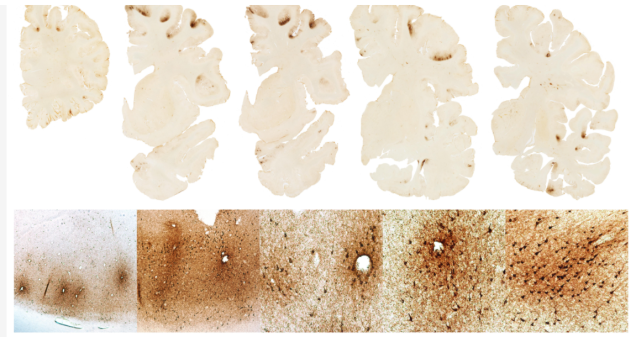
Former New England Patriots tight end Aaron Hernandez, who was serving a life sentence for a 2015 first degree murder conviction was found to the most severe case of CTE ever found in a 27-year-old.
The news was announced by Hernandez estate attorney Jose Baez who’s filing a federal lawsuit against the NFL and New England Patriots on behalf of Hernandez’s daughter.
Within the findings conducted by Boston University’s CTE research lab – the most comprehensive in the country – the former tight end who played in just 44 career NFL games had stage three CTE. The scale runs from one to four with four being the most severe.
BU also released the following graphic (via Deadspin) showing what the University claims is “brain atrophy and large perforations” in Hernandez’s brain. Or in layman’s terms, large holes in the brain.

Hernandez committed suicide in his prison cell back in April where he was serving out a life sentence without parole for the 2013 murder of Odin Lloyd. His death came just hours before his former Patriots team was to visit the White House after their Super Bowl win over the Falcons this past winter and just five days after he was found not guilty of double homicide charges in a separate case.
Taken by the Patriots in the fourth round of the 2008 Draft, Hernandez was a star coming out of Florida who would’ve been taken earlier if it wasn’t for his documented off the field problems while in college. This included a bar fight, failed drug tests and later suspicion of being involved in a shooting. Hernandez however went on to form an imposing tight end duo with Rob Gronkowski accumulating 79 catches for 910 yards and seven touchdowns that eventually earned himself a $40 million dollar contract extension from New England.
Seemingly on top of the World, everything came crashing down for Hernandez after his 2013 arrest which resulted in his release from the Patriots and eventual life sentence.
These latest revelations pertaining to Hernandez should be especially worrisome to not only the NFL but it’s players considering the level of deterioration in a 27-year-old’s brain. A recent study found that of 111 former NFL player brains tested, 110 came back as having the degenerative brain disease that can only be diagnosed via autopsy.
Thought to be caused by numerous concussion, CTE damage is primarily focused in frontal region of the brain that controls

